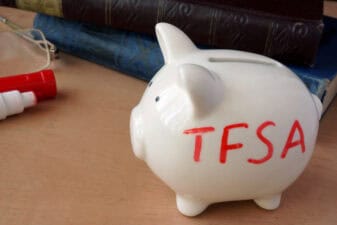In Canada, the so-called “big five” banks get all the attention. These are some of the largest financial institutions on the planet, with operations that span the globe, and have top-notch management. They also survived the financial crisis of 2008-2009 with minimal consequences, at least compared to some of the world’s other financial institutions.
With those kind of credentials, it’s no wonder our banks get so much attention.
Canada’s banks are still fairly valued, too. Royal Bank (TSX: RY)(NYSE: RY) trades at a trailing P/E multiple of just 13 times, even after managing to grow its revenue nicely and its most recent net profit by nearly 10%. This is a very reasonable valuation, especially when compared to other companies in the market. Each of Canada’s other big banks trade at similar valuations.
And yet, there’s one bank I like better than the big five, partially because it’s often forgotten by investors. Here are three reasons why National Bank (TSX: NA) should have a spot in your portfolio.
1. It’s cheaper
Each of Canada’s other banks trades at a P/E ratio in the neighborhood of 13 times. Both Bank of Montreal (TSX: BMO)(NYSE: BMO) and Canadian Imperial Bank of Commerce (TSX: CM)(NYSE: CM) trade at a 12.5 P/E, while Toronto Dominion Bank (TSX: TD)(NYSE: TD) is the most expensive of the group, coming in at a little over 14 times earnings. Like I mentioned earlier, these are all very reasonable earnings multiples.
Yet they don’t compare to National Bank, which only trades at a little more than 10 times earnings. National is a full 20% cheaper than the cheapest of the big five.
Even from a price-to-book value comparison, National is still cheap. The company trades at less than twice its book value, while each of its competitors trades at over two times.
At some point, a catalyst will emerge that will lift the company so it trades at the same levels at its peers. Investors who get in now are looking at a 25% upside when this happens.
2. Foreign expansion
National Bank is sorely lacking in one area, at least compared to its larger competitors — it doesn’t have any meaningful exposure outside of Canada. Sure, the company has exposure to other economies via a bunch of branch offices located around the United States and Europe, but it hasn’t been an active buyer of assets outside Canada.
It’s only a matter of time before this changes. Not only is the company running out of areas to expand within Canada, but it’s also suffering from a Quebec discount, since investors are nervous about the province’s economic prospects. Buying up assets around the world is an obvious solution. A big foreign acquisition would entice investors who previously ignored the company to take a second look, and give it an obvious growth path.
It’s only a matter of time until this happens. National has the size, borrowing ability, and management expertise to pull off a large foreign acquisition.
3. Top-notch dividend
National Bank’s dividend is the highest among Canada’s banks, coming in at 4.2%. It isn’t a huge premium compared to its peers, but it’s still 5% higher compared to its closest competitor.
The company has a stated goal of maintaining its payout ratio at between 40% and 50% of earnings, making its dividend extremely safe. It also has a stellar record of growing its quarterly payout, increasing it eight times since the financial crisis. National Bank offers investors a terrific combination of dividend safety and growth.








